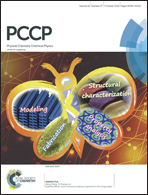Dye-sensitized solar cell from polyaniline–ZnS nanotubes and its characterization through impedance spectroscopy†
Abstract
Polyaniline (PANI)–zinc sulphide (ZnS) nanocomposites (PAZs) are synthesized by polymerizing aniline in the presence of acetic acid with different concentrations of ZnS nanoparticles (NPs). FESEM and TEM images indicate the nanotube morphology of PANI and ZnS NPs remain adhered to the nanotube surface, but at higher ZnS concentration the nanotube morphology is lost. UV-vis spectra indicate PANI is in the doped state and the doping increases with an increase in ZnS concentration. Fluorescence intensity passes through a minimum with ZnS content and the dc-conductivity of the composites gradually increases with an increase in ZnS NP concentration. The I–V plot of PAZ composites indicates that the photocurrent is higher than that of the dark current at each voltage, and the device exhibits reversible turning “on” and “off” by switching the white light illumination “on” and “off”. Dye-sensitized solar cells fabricated with PAZ composites display a reasonably higher power conversion efficiency (η = 3.38%) than pure ZnS NPs. An attempt is made to shed light on the operating mechanism of the DSSC from the impedance data using a Cole–Cole plot by drawing an equivalent circuit illustrating the different electronic and ionic transport processes within the cell.


 Please wait while we load your content...
Please wait while we load your content...